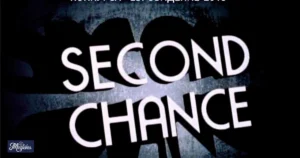“Bringing It All Together!”
In conversations, we often use phrases to bridge thoughts and ideas, and “with that being said” is a common expression. It serves as a transition, signaling that you’re about to present a new point, often related to what was just discussed. However, using the same phrase repeatedly can become monotonous and may not always suit every context. By diversifying your expressions, you can enhance your communication and keep your audience engaged.
This article explores 35 alternative phrases to “with that being said,” each accompanied by a scenario and additional insights. These alternatives will help you articulate your thoughts more effectively in both professional and casual settings. By adopting these varied expressions, you can better convey your message and connect with your audience.
Whether you’re drafting an email, participating in a meeting, or chatting with friends, having a repertoire of phrases can enrich your communication skills. Let’s dive into these alternatives and discover how to elevate your conversations!
1. “That said”
Scenario:
Imagine you’re in a meeting discussing project delays. You say, “We need to acknowledge the challenges we faced. That said, we must focus on the next steps.”
This phrase transitions smoothly, maintaining the flow of the conversation while allowing you to pivot to new ideas.
Additional Tip:
Use “that said” when you want to soften a previous statement while shifting towards a positive or constructive direction.
2. “Having said that”

Scenario:
During a team discussion, you remark, “The project has some flaws. Having said that, we still have time to make improvements before the deadline.”
This phrase acknowledges the previous point while allowing you to introduce a more optimistic viewpoint.
Additional Tip:
This expression works well in negotiations where you need to balance criticism with potential solutions.
3. “On that note”
Scenario:
While discussing team morale, you comment, “Team spirit has been low. On that note, let’s brainstorm ideas to boost engagement.”
Using “on that note” indicates you’re building on the previous thought, leading to a related action.
Additional Tip:
This phrase is effective when transitioning to a new idea that relates closely to the prior discussion.
4. “In light of that”
Scenario:
You’re presenting a marketing strategy and say, “The data shows a decline in engagement. In light of that, we need to adjust our approach.”
This phrase emphasizes the importance of the previous information in shaping your next point.
Additional Tip:
Use “in light of that” to convey a sense of urgency or importance regarding changes needed based on new information.
5. “Given that”
Scenario:
During a budget review, you explain, “Given that our expenses have increased, we need to revise our financial plan.”
This expression highlights the reasoning behind your upcoming recommendations or decisions.
Additional Tip:
“Given that” is particularly effective in analytical discussions where you need to justify your statements with data.
6. “That being the case”
Scenario:
In a project update, you state, “We’ve encountered unexpected delays. That being the case, we need to extend the timeline.”
This phrase signals that you’re acknowledging a situation before moving forward.
Additional Tip:
Use this expression to emphasize causality and the necessity of action based on a stated situation.
7. “Therefore”
Scenario:
When discussing a product launch, you conclude, “Sales have steadily increased. Therefore, we should proceed with the launch as planned.”
Using “therefore” clearly indicates the conclusion drawn from prior statements.
Additional Tip:
This word is useful in formal writing and presentations to demonstrate logical reasoning.
8. “As a result”

Scenario:
While analyzing project performance, you say, “We missed several deadlines. As a result, we need to reevaluate our strategies.”
This phrase effectively connects previous actions or outcomes to subsequent decisions.
Additional Tip:
Use “as a result” to clearly articulate cause and effect in both verbal and written communication.
9. “Consequently”
Scenario:
In a financial review, you mention, “The expenses have exceeded our budget. Consequently, we must make cuts in other areas.”
This word indicates a direct consequence of the previously discussed information.
Additional Tip:
“Consequently” is suitable for formal settings where you want to maintain a professional tone.
10. “With this in mind”
Scenario:
While giving feedback, you say, “The presentation was well-prepared. With this in mind, let’s discuss areas for improvement.”
This phrase helps to connect your feedback to the current focus of the discussion.
Additional Tip:
Use this expression to emphasize that your next points are built upon the previous context.
11. “Thus”
Scenario:
In a research presentation, you conclude, “The findings suggest a need for further study. Thus, we recommend allocating more resources.”
Using “thus” conveys a logical conclusion from prior discussions.
Additional Tip:
“Thus” works well in academic and professional contexts where clarity and formality are important.
12. “In summary”
Scenario:
At the end of a discussion, you say, “We’ve covered various topics today. In summary, we need to prioritize the project timeline.”
This phrase effectively wraps up the discussion while transitioning to the next steps.
Additional Tip:
Use “in summary” when you want to highlight key takeaways and guide the conversation forward.
13. “In conclusion”
Scenario:
While wrapping up a meeting, you state, “In conclusion, we have actionable steps to take moving forward.”
This phrase signals that you are summarizing the discussion.
Additional Tip:
“In conclusion” is ideal for formal presentations or discussions to indicate the end of your main points.
14. “To that end”

Scenario:
While discussing a strategy, you say, “We need to increase our outreach efforts. To that end, let’s explore new marketing channels.”
This expression indicates that you are aligning your next actions with the previous discussion.
Additional Tip:
Use “to that end” when you want to clearly articulate your objectives based on prior conversations.
15. “For that reason”
Scenario:
During a project update, you state, “We’ve seen improved results. For that reason, we should continue our current approach.”
This phrase connects your reasoning directly to the previous statement.
Additional Tip:
Use “for that reason” to emphasize justification for a decision or action based on discussed outcomes.
16. “To sum up”
Scenario:
In a brainstorming session, you say, “We’ve generated many ideas. To sum up, let’s prioritize the most feasible options.”Being Said
This phrase helps to consolidate information and prepare for the next steps.
Additional Tip:
Use “to sum up” for casual discussions to maintain a friendly tone while summarizing.
17. “On a related note”
Scenario:
While discussing customer feedback, you mention, “We received positive responses. On a related note, we should consider expanding our services.”
This expression helps to pivot the conversation to a relevant topic.
Additional Tip:
Use this phrase to transition smoothly between connected topics in a conversation.
18. “In the same vein”
Scenario:
When discussing team collaboration, you say, “The team has worked well together. In the same vein, we should maintain our open communication channels.”Being Said
This phrase reinforces a connection between similar ideas.
Additional Tip:
“In the same vein” is great for emphasizing continuity in thoughts or themes during discussions.
19. “Following that”
Scenario:
In a project status report, you state, “The team has completed Phase 1. Following that, we will begin Phase 2 next week.”
This phrase establishes a sequence of actions based on prior events.
Additional Tip:
Use “following that” to clearly indicate next steps in a process or timeline.
20. “As such”
Scenario:
While discussing outcomes, you mention, “Our efforts have led to significant improvements. As such, we can expect better performance moving forward.”Being Said
This expression indicates a direct correlation between cause and effect.
Additional Tip:
“As such” works well in formal writing to maintain professionalism while expressing conclusions.
21. “In other words”
Scenario:
When clarifying a point, you say, “We need to focus on quality. In other words, we must ensure our standards are met.”
This phrase provides clarity and reinforcement of your previous statement.
Additional Tip:
Use “in other words” to simplify complex ideas or to reiterate important points.
22. “In essence”
Scenario:
While summarizing a discussion, you mention, “In essence, we all agree that collaboration is key to our success.”Being Said
This phrase captures the core of what has been discussed.
Additional Tip:
“In essence” is effective for distilling discussions into their most critical components.
23. “With this perspective”
Scenario:
In a discussion about customer service, you say, “With this perspective, we can better understand our clients’ needs and adapt accordingly.”
This phrase introduces a viewpoint that shapes the next actions.
Additional Tip:
Use “with this perspective” to emphasize how a particular viewpoint influences your subsequent points.
24. “To put it another way”
Scenario:
When explaining a concept, you say, “We need to engage our audience more. To put it another way, we must make our presentations more interactive.”Being Said
This phrase aids in rephrasing for better understanding.
Additional Tip:
Use this expression when you want to clarify or elaborate on complex ideas.
25. “In short”
Scenario:
While summarizing findings, you say, “We’ve seen growth this quarter. In short, our strategy is working.”
This phrase offers a concise summary of the main point.
Additional Tip:
“In short” is effective when time is limited, and you want to get to the heart of the matter quickly.
Other Ways to Say “Looking Forward to Working with You”
26. “On balance”
Scenario:
In a performance review, you mention, “On balance, the team’s efforts have exceeded expectations this quarter.”
This phrase indicates a weighing of pros and cons before arriving at a conclusion.
Additional Tip:
Use “on balance” to present a considered assessment after discussing multiple aspects.
27. “As a final thought”
Scenario:
While wrapping up a presentation, you say, “As a final thought, let’s remember the importance of teamwork in our success.”Being Said
This phrase serves as a closing remark that summarizes the discussion.
Additional Tip:
Use “as a final thought” to leave a lasting impression on your audience.
28. “In the end”
Scenario:
In a discussion about a challenging project, you state, “In the end, we achieved our goals despite the obstacles.”
This phrase indicates a conclusion based on the preceding discussion.
Additional Tip:
“In the end” is great for highlighting the final outcomes of a series of events.
29. “Ultimately”
Scenario:
While discussing long-term goals, you say, “Ultimately, our success depends on our commitment to quality.”
This phrase emphasizes the final outcome of a situation.
Additional Tip:
Use “ultimately” when you want to convey a sense of finality and importance regarding your conclusion.
30. “Thus far”
Scenario:
In a project meeting, you mention, “Thus far, we’ve made significant progress. Let’s continue to build on this momentum.”Being Said
This phrase indicates the progress made up to this point.
Additional Tip:
Use “thus far” to highlight achievements while motivating the team to maintain their efforts.
31. “With that in mind”
Scenario:
While discussing goals, you state, “We need to be realistic about our timeline. With that in mind, let’s adjust our expectations.”
This phrase helps frame the next actions based on prior discussions.
Additional Tip:
“With that in mind” is useful when guiding decisions based on earlier points made.
32. “Consequently”
Scenario:
In a discussion about safety protocols, you say, “We’ve identified several risks. Consequently, we need to implement new measures.”
This phrase indicates a direct cause-and-effect relationship.
Additional Tip:
Use “consequently” in formal contexts to maintain professionalism while explaining actions taken based on findings.
33. “To conclude”
Scenario:
At the end of a training session, you say, “To conclude, effective communication is vital for team success.”
This phrase signals the end of your main points.
Additional Tip:
“To conclude” is ideal for formal presentations to clearly indicate your closing thoughts.
34. “Wrapping up”
Scenario:
While summarizing a team discussion, you state, “Wrapping up, we have several actionable items to focus on moving forward.”
This phrase indicates the conclusion of a discussion.
Additional Tip:
Use “wrapping up” to maintain a casual tone while summarizing important points.
35. “In closing”
Scenario:
During a panel discussion, you conclude, “In closing, let’s all strive to foster a collaborative environment.”
This phrase indicates that you’re summarizing the main points as the discussion comes to an end.
Additional Tip:
“In closing” is effective for formal settings and helps signal the end of your remarks.
Pros and Cons of Using Alternative Phrases
| Pros | Cons |
| Variety: Using different phrases keeps conversations fresh and engaging. | Context Sensitivity: Some phrases may not fit every situation, so choose wisely. |
| Connection: Personalized messages can strengthen relationships and show genuine care. | Cultural Differences: Certain expressions may not resonate with everyone due to cultural nuances. |
| Positivity: Spreading positivity can improve both your mood and the recipient’s mood. | Misinterpretation: Alternative phrases may be misunderstood or misinterpreted. |
Conclusion
Exploring various phrases to say “with that being said” enriches your communication. Each alternative offers a unique flavor that can enhance your conversations, whether in professional or casual settings.
By incorporating these expressions, you can maintain engagement, build connections, and convey your thoughts more clearly. Remember to consider the context and audience when choosing your words to ensure effective communication.

Hi, I’m Ethan Matthews: I make English easy with my clear and simple teaching style. I love helping learners feel confident in every lesson.










